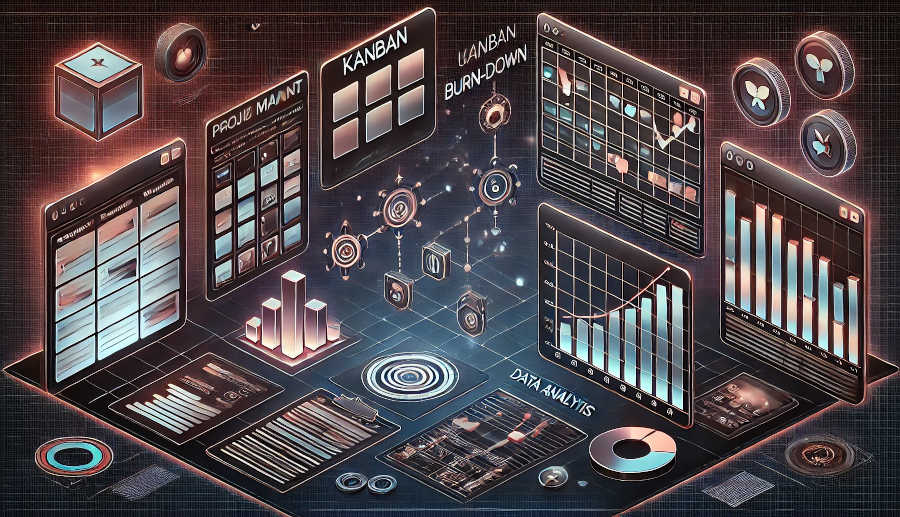In the realm of product development, complex projects pose unique and formidable challenges. These projects often involve multiple disciplines, intricate technical requirements, and a web of stakeholders with diverse interests. The Research and Development Integrated Product Development (R&D IPD) process has emerged as a crucial framework to navigate these complexities and ensure successful project outcomes. The IPD process is not just a set of procedures; it is a holistic approach that integrates various functions within an organization, from marketing and engineering to manufacturing and customer support. By aligning these functions from the very beginning of a project, IPD aims to reduce development time, improve product quality, and enhance overall competitiveness. Understanding how the R&D IPD process copes with complex projects is essential for companies looking to innovate and thrive in today's dynamic business landscape.
Understanding Complex Projects
Complex projects are characterized by a high degree of uncertainty, both in terms of technology and market requirements. Technologically, they may involve cutting-edge research, untested materials, or integration of multiple advanced systems. For example, developing a new electric vehicle requires expertise in battery technology, electric drivetrains, and autonomous driving systems, all of which are areas of rapid innovation and uncertainty. Marketwise, complex projects often target emerging or evolving markets, where customer needs are not fully understood. A new software application for a niche market segment might face challenges in accurately predicting user adoption rates and feature preferences.
Moreover, complex projects typically have a large number of stakeholders, each with their own goals and expectations. Internal stakeholders such as different departments within a company may have conflicting priorities. The marketing team might push for a quick launch to gain market share, while the engineering team needs more time to ensure product reliability. External stakeholders, including customers, suppliers, and regulatory bodies, also add to the complexity. Customers may demand specific features, suppliers might face production delays, and regulatory requirements can change during the development process.
In addition, the scale and scope of complex projects can be overwhelming. They often span long timeframes, involve significant financial investments, and require coordination across multiple geographical locations. Building a large-scale infrastructure project like a new airport or a high-speed rail network involves numerous contractors, subcontractors, and regulatory approvals, making it a logistical and management nightmare.
Key Elements of the R&D IPD Process
The R&D IPD process consists of several key elements that work together to address the challenges of complex projects. One of the fundamental aspects is cross-functional integration. This means bringing together teams from different disciplines early in the project. For instance, in the development of a new consumer electronics product, the marketing team can provide insights into market trends and customer needs, while the engineering team can offer technical feasibility assessments. By collaborating from the start, potential issues can be identified and resolved before they become major problems.
Another crucial element is stage-gate management. The IPD process divides the project into distinct stages, each with specific deliverables and decision points, known as gates. At each gate, a comprehensive review is conducted to determine whether the project should proceed to the next stage. This helps in controlling costs, managing risks, and ensuring that the project stays on track. For example, at the end of the concept development stage, the project team presents the proposed product concept to senior management. If the concept does not meet the predefined criteria, such as market potential or technical feasibility, the project may be halted or redirected.
Furthermore, the IPD process emphasizes the use of a common platform and modular design. A common platform provides a foundation for multiple products, reducing development time and costs. Modular design allows for easy customization and upgradeability. In the automotive industry, a common vehicle platform can be used to develop different models, with modular components such as engines, transmissions, and interiors. This not only streamlines the development process but also makes it easier to adapt to changing market demands.
Coping with Technical Challenges
In complex projects, technical challenges are often at the forefront. The R&D IPD process copes with these by promoting early technology assessment. This involves identifying and evaluating emerging technologies that could be relevant to the project. For example, in the development of a new medical device, the team might research advancements in materials science, sensor technology, and data analytics. By staying informed about the latest technological developments, the project can incorporate the most suitable solutions, enhancing the product's performance and competitiveness.
The IPD process also encourages the use of prototyping and simulation. Prototyping allows the team to build and test a physical or virtual model of the product early in the development cycle. This helps in validating the design, identifying potential flaws, and making necessary adjustments. Simulation, on the other hand, can be used to predict the behavior of the product under different conditions. In the aerospace industry, computer simulations are used to test the aerodynamics of a new aircraft design, reducing the need for costly and time-consuming physical wind tunnel tests.

Moreover, the IPD process fosters a culture of continuous learning and improvement. Technical teams are encouraged to share knowledge and experiences across projects. This can lead to the development of best practices and the ability to quickly address new technical challenges. For example, if one project team encounters a particular software bug, they can share the solution with other teams, preventing similar issues in future projects.
Handling Market Uncertainty
Market uncertainty is a significant challenge in complex projects. The R&D IPD process addresses this by conducting thorough market research throughout the project. This includes understanding customer needs, analyzing market trends, and identifying potential competitors. For example, in the development of a new mobile application, market research can help determine the target audience, their pain points, and the features they would most value. By staying close to the market, the project team can make informed decisions about product features and positioning.
The IPD process also allows for flexibility in product development. Since market conditions can change rapidly, the ability to adapt the product is crucial. This is achieved through iterative development cycles. For instance, if early market feedback indicates that a particular feature of a new software product is not well-received, the development team can make adjustments in subsequent iterations. This iterative approach helps in aligning the product with market demands and increasing its chances of success.
In addition, the IPD process emphasizes the importance of building strong relationships with customers. By involving customers in the development process, such as through beta testing and focus groups, the project team can gain valuable insights into their needs and preferences. This customer-centric approach not only helps in developing a product that meets market expectations but also builds customer loyalty from the start.
Managing Stakeholder Expectations
With a large number of stakeholders in complex projects, managing their expectations is crucial. The R&D IPD process starts by clearly defining the roles and responsibilities of each stakeholder. This ensures that everyone knows what is expected of them and what they can expect from others. For example, in a large construction project, the project owner, architect, contractor, and subcontractors all have well-defined roles in terms of design, construction, and quality control.
Effective communication is also a cornerstone of stakeholder management in the IPD process. Regular meetings, progress reports, and open channels of communication help in keeping stakeholders informed about the project's status. This transparency builds trust and reduces the likelihood of misunderstandings. For instance, a project team might hold weekly meetings with key stakeholders to discuss any issues, challenges, or changes in the project plan.
Furthermore, the IPD process encourages the involvement of stakeholders in decision-making. By seeking their input and feedback, the project team can ensure that decisions are made in the best interests of all parties. For example, when deciding on a major design change in a new product, the project team might consult with the marketing team, engineering team, and customers to understand the potential impact on different aspects of the project.
Conclusion
In conclusion, the R&D IPD process is a powerful framework for coping with the challenges of complex projects. By integrating cross-functional teams, implementing stage-gate management, and emphasizing common platforms and modular design, it provides a structured approach to product development. In the face of technical challenges, it promotes early technology assessment, prototyping, and continuous learning. To handle market uncertainty, it relies on thorough market research, flexibility in development, and strong customer relationships. And when it comes to managing stakeholder expectations, it focuses on clear role definition, effective communication, and stakeholder involvement in decision-making.
Companies that adopt the R&D IPD process are better positioned to navigate the complexities of modern projects. They can reduce development time, improve product quality, and increase the likelihood of meeting market demands. However, implementing the IPD process is not without its challenges. It requires a cultural shift within the organization, a commitment to collaboration, and a willingness to invest in the necessary resources and training. But the rewards of successfully implementing the IPD process in complex projects are significant, enabling companies to stay competitive in an increasingly dynamic and challenging business environment. As the nature of projects continues to evolve, with even greater complexity and uncertainty, the importance of the R&D IPD process will only increase. It will serve as a guiding light for organizations seeking to innovate and bring successful products to market in a timely and efficient manner.
ARTICLE TITLE :How the R&D IPD process copes with the challenges of complex projects ,AUTHOR :ITpmlib

















